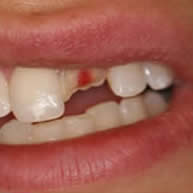Even with proper care, you can still face dental issues. Daily wear and tear can result in broken, fractures, or lost teeth. Restorative dentistry focuses on re-establishing a strong, healthy smile. Fillings, dental implants, inlays and onlays, crowns, and dentures can restore damaged teeth and improve oral health.
What options are available for missing teeth?
When you don’t have a complete smile, your oral health and self-confidence suffers. Bridgework, dentures, or dental implants can revive function and appearance. Permanently cemented in place, a dental bridge can close gaps left by missing teeth. Dentures are prosthetic teeth attached to a gum-colored base that replace some or all of your original teeth. Surgically placed in your jaw, dental implants mimic the look and feel of natural teeth.
What’s the difference between a filling and a crown?
For a small area of decay, your dentist will probably remove the damage and restore the area with a filling. Made from composite resin, the filling is hardened with a curing light and buffed to create the desirably look. When you sustain more damage, you may need a crown, a restoration that covers the entire tooth above the gum line.
Why would I need an inlay or onlay?
Sometimes, you need more than a regular filling but not a full crown. Inlays and onlays work in these situations. An inlay is bonded into the center of the tooth, while an onlay reaches one of more of the cusps.
Why is my doctor suggesting a root canal?
Deep decay or severe trauma can affect the soft inner core of a tooth, referred to as pulp. If the pulp dies, an infection and pressure build, causing intense pain. To save the tooth, your dentist may recommend a root canal. During root canal therapy, your dentist will remove the diseased tissue, seal off the tooth, and place a crown to stabilize the tooth.
If you live in the Milford, NJ, contact us today






